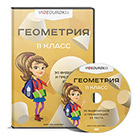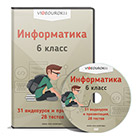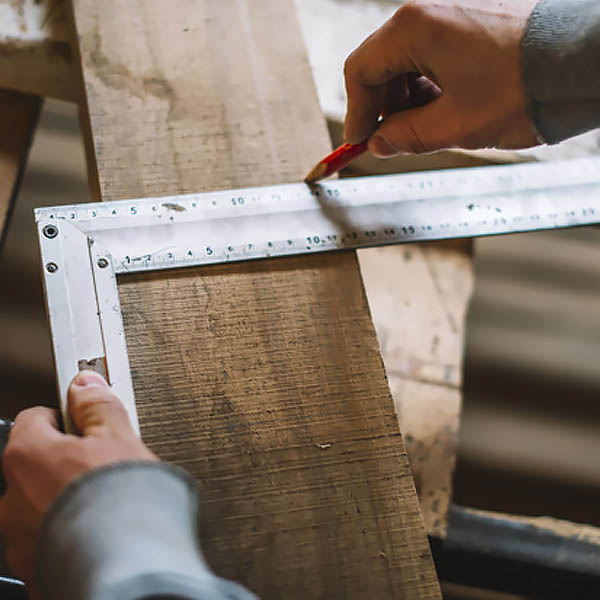NINA
Columbus Caravel
On 12th October 1492 Christopher Columbus, in the service of Spain, set the royal flag on an island of a completely unknown world to Europe.
This extraordinary adventure was due to the strong perseverance of a foreigner haunted by the conviction that the Atlantic Ocean was but a sea, narrow enough to be crossed in a few days on a boat.
Christopher Columbus, son of a Genoan weaver, had been thinking about this project for fifteen years and then spent eight years of his life looking for someone who could accept it.
The report of his triumph lives through two documents of the time: one is the caravel's log-book and the other is the touching biography of Christopher Columbus, written by his son Ferdinando.
Preparations for leaving started in May in Palos, the city of Pinzon and Nino. Infact these two families supplied the enterprise with the two famous caravels: Pinta and Nina. The third was chartered by Juan de la Cosa.
Columbus took the command of his small fleet and at the dawn of August 3rd weighed anchor, leaving South towards the Canary Islands.
Navigation was not at all easy: "Here people cannot stand it any more and complain over the length of the journey" noted Las Casas.
The fleet had been at sea for 34 days and was still sailing, hopelessly, towards an unknown destination.
"If the Captain won't decide to sail back home, we'll throw him into the sea and, once back in Spain, we'll tell everybody that he fell overboards accidentally. Nobody will argue with that", wrote Ferdinando.
Around 10p.m. on October 11th Columbus noticed a dim light. Nothing was told to the sailors and they didn't notice anything. Four hours passed. Then around 2a.m. a sailor on the Pinta perceived the coast of an island, lit by the moon.
Columbus was right! After 36 days at sea and a voyage of 2.400 miles, he landed, exactly as he had promised. Even so he had not reached the Indies. Columbus arrived at Watlings Islands in the Bahamas, 9.000 miles away from them.
FIG. 1 - 2
Prepare joints on tips of parts from 2 to 7, as shown in Fig. 2, in this way they'll be easily removed after having applied bulwark planking.
Glue frames from 2 to 11 onto keel 1, be careful to position frames perpendicular to the keel and parallel to one another (except frame 11 which should be slanting).
FIG. 3
Glue parts 12 and 13 onto frames 2 and onto the kill, as shown. They'll be useful while applying planking at stem.
FIG. 4
Apply block 14 flush to stern frame 11. Use a strip to check correct shape of the hull, shape edges of frames at stem and at stern, following hull outline, in this way you'll easily apply planking. Tape ends of parts 12 and 13 at stem, take off corners.
FIG. 5
Plank sternboard 15 with strips 15, position them as shown in figure.
Note the different directions of planking between frame and stern block.
FIG. 6
Plank quarterdeck 16 with strips 17.
On quarterdeck drill holes for masts. Glue the deck onto the hull (frames from 8 to 11), drill the hole for small mast deeply in part 14 (do not drill through completely).
FIG. 7
Cover outsides of frame tips from 2 to 7 with adhesive tape. This will help removing tips later on, since they won't stick to the rest.
Plank hull with strips 18. It is advisable to start from main deck going down wards, and finish planking over main deck line.
Some small nails will help gluing. We suggest use of special tool Amati Pin Pusher (art. 7384), designed to ease nailing strips to frames.
Let the glue dry completely, then sand the hull using thin sand paper.
Strips for side quarterdeck planking should be shaped following drawings on Table 1, carefully.
For this operation you can use a very thin fret saw blade. Be careful not to spoil strips of planking.
FIG. 8
Prepare rudder 19, gluing together 2 pre-cut mm. 2 pieces. Apply tiller 21. Drill holes to fix rings 69 and 70 on stempost and on rudder. Apply eyebolts with rings onto stern and only one eyebolt, without ring, on rudder. Now glue rudder to stempost using hinges 20. Sling rudder as shown in Figure, using a piece of rope 71.
FIG. 9 -10
Use a pair of tweezers to take off frame tips, be careful not to spoil bulwark planking. Sand upper edges of frames.
FIG. 11
Plank upper deck 22 with strips 23. On deck make holes for mast and for anchor rope wells. Glue the deck onto the hull.
FIG. 12-13
Cover quarterdeck bulkhead with strips 24.
On deck apply stringers 25, positioning two mm.1x1 strips, one near the other, all along bulwarks inside, apply poppets 26 leaning them on stringers. The last stem poppets should be shorter than the other of about mm.2, in order to allow positioning of board 28 (Fig.13).
Use a flat file to prepare seat to sling anchors on bulwarks.
Following instructions given in Table 1 position strips 27, gluing them on poppets.
Apply upper deck gunwales 29 and 30 leaning them against stempost and flush with poppets 26. In this way gunwales will stick out the hull.
Apply pre-shaped stringers 35 and 36 and cross bars 37 and 38 onto quarterdeck edges. The two side stringers 35 and 36 should stick out the hull as gunwales do.
FIG. 14 -15 -16
Apply wales 31 and 32 along bulwarks. Then glue 33, following gunnels towards stem.
Check exact positioning following details on lateral view on Table 1.
Now apply vertical fenders 34 (first layer) between gunwales and wales 32 and between wales 32 and wales 31. Now continue applying second layer of strip 34. Now all gunwales, wales and fenders should be on the same level. Apply the third layer of strips 34, all together.
When glue is completely dry shape fenders with sandpaper, as shown in Fig. 16.
Drill holes for cannons and then sand them with thin sandpaper.
For this operation it is advisable to position a cannon on deck and check exact height of barrel. The barrel should be right in the middle of the hole You are going to drill on bulwark.
FIG. 17 -18
On main deck gunwales apply decoration arches 39. These parts are made of two wooden pieces of mm.2, joined together, sanded and glued. The decorations cover planking strips, which had been cut before (Fig. 7).
FIG. 19
Apply decoration 40 for the door on covering of quarterdeck bulkhead. Complete the door, add handle 4l and hinges 42. To make handle bend the head of an eyebolt, then insert shank into bulkhead. Prepare windows cutting decorations 44 the right size. Shape nets 43 inside windows, then glue the whole onto bulkhead and add shelves 45. Prepare quarterdeck banister firstly by applying columns 46 on strips 35, 36, 37, 38. Be careful to columns inclination on each single portion of quarterdeck. Check drawings in scale 1:1 on Table 1 (side and stern view).
Let the glue dry well. Then on columns apply handrails 47-48 (already shaped) and 49-50 (make them from a mm.2x4 strip). Handrail 49 must be positioned as shown in Fig. 19.
FIG. 20-21
Prepare hatchway making beams 51 with strip mm. 2x2. Make lateral frames 52 with strip mm. 1x4, apply the longer ones straight onto beams 51. Assemble the whole, forming a frame. Position hatches 53 (made from strip mm. 1x4) directly on beams 51.
On hatches 53 drill holes for handles. Then position handles which are made of piece 54 and 55 (eyebolts and rings).
Now apply hatchway on the deck following view on Table 1.
FIG. 22
Prepare both gratings 56, following instructions given in figure. Check correct measures on Table 1. Frames 57are made from mm. 1x4 strip. Position gratings on main deck and on quarterdeck.
FIG. 23
Make bitts 58 and pin rack (only crossing part) 59 using a mm. 3x3 strip. Shape bitts 58 with a file, as shown in figure, make joints for cross bar 59, which should be fixed in for half its thickness. Correct dimensions can be find in drawing on Table 1.
Now apply this part onto main deck as shown in view.
FIG. 24
Make front support 73 for lifeboat, take exact measures from view on Table 1. Then apply this part onto deck. Make holes for eyebolts near hatchway and next to lifeboat support. Insert eyebolt 74 and finish them with rings 75.
Paint lifeboats natural wood, then position it upside down on hatchway and on support 73. Tie it with rope 76 as shown in figure.
DECK FITTINGS AND HULL FINISHING
(See Fig. 2 and 3 on Table 1)
Before applying all fittings on decks it is advisable to finish and color the hull completely. At stem, on bulwark, drill holes for anchors' ropes. Glue hawse holes 63 on the outside. Now you can color the hull with a transparent matt varnish. Wales and fenders can be a little bit darker than hull planking.
Prepare windlass 60 and then apply it onto the deck.
Glue also parts 62 round holes for anchor ropes, on deck.
Wind rope 6l around windlass, insert one end into deck holes and the other end, much longer, into hawse hole on bulwarks. Both ends should be then tied to anchor rings. Position anchors on gunwale, tie them with a piece of thin rope, through holes you've made before. Prepare staircase 66, verify dimension on plan.
Then apply it on deck.
Mount cannons 67, barrel and carriage, and apply them on deck in front openings an bulwark.
Position heel 89 on main deck, round hole for mast, do not glue it. In this way you can now glue pump 68 near mast heel.
On decks drill all holes for eyebolts and rings 94-95.
Check plans. These rings will be useful for riggings, use few drops of cyanoacrylate to fix them firmly.
MASTING (TABLE 2)
Prepare masts following technical plans in scale 1:1. Taper dowels for masts and yards from No. 80 to No. 88. Follow drawings in scale 1:1.
MASTS
Firstly make parts 77-78-79 from a mm. 6x6 strips. Follow figure in detail. Drill holes where yard riggings will run through and in which there will be inserted pivots, in order to fix riggings to masts. Cover main mast 80 with strips 93 mm. 1x3. This will act as reinforcements for lower part of mast. Sand and round edges.
Now on top of main mast apply part 77. Let glue dry well and then position rod 81. On top of part 77 make a hole to fix the rod securely, otherwise you can join rod, part 77 and mast with a little metal pin. Position main mast on deck, check correct inclination and insertion. Glue mast heel onto deck and then glue main mast.
Follow these same instructions for mizzenmast 82, rod 83 and part 78, the only difference being that lower part of mizzen mast is not planked. Assemble pole 84 with its part 79 (smaller). Now on deck glue mizzen mast with heel 89, and rod with heel 90.
YARDS
Sand larger ends of spars 85 (2 pieces) and 86 (2 pieces), so that they join smoothly. Glue parts of spars together and then make bindings (use rope 102). Apply parrels (parts 100 and rope 101) onto spars 85-86-87, in order to fix masts. Rope 101 should be long enough to make bindings easily. Apply blocks 96 on yards, tie them with rope 101. Apply outrigger 88, shaping its seat on part 38. Apply also mast steps 91 and 92.
SAILS
Cu printed cloth sails 103 and fold borders inwards, then sew them to the inner side, using thin thread or you can also use cyanoacrylate. Reinforce all sail corners by sewing them, you can also apply some small pieces of cloth. See side view on Table 1. Make holes in order to fix sails to yards and apply rope rings 102 on corners.
Lace sails to spars with rope 101, then position the whole onto masts.
RIGGINGS
Figures from 25 to 33 show all riggings. Each number in a square corresponds to a type of rigging:. Consult the list of riggings to check wether each rigging is single or double (left=sx right=dx). In figures 32 and 33 the same numbers indicate where rigging will be tied (number plus letter A) and the beginning point (number).
On lateen yard begin with inner riggings and then make the other riggings.
Fig. 30 shows how to make shrouds using triangular deadeyes 99- Fig. 31 shows how to tie the davit of the main mast halyard.
FLAGS
Cut flags from the given adhesive cloth, use a scalpel. All along line of bending cut protective paper. Take off only half paper film. Position a piece of rope 101 all along bending line, in order to tie flag to the pole. Take off the other part of the paper film and bend flag carefully on itself. Apply flags onto mast poles.
You can finally buy a hard wooden base and two turned columns to show your model.
Now your model is finished. Show it proudly, it is your creation.
Please note that the following points are marked with a! on the instruction photographic booklet.
Step 1
Check joints on frames. If necessary enlarge joints using a file on both sides.
Step 4
Sand frame edges towards bow and stern.
Step 5
Sand edges of bow shim elements.
Step 6
Drill holes on deck (refer to 1:1 scale drawing on Table 1).
Step 7
Apply first planking using basswood strips (18) 1x3 mm.
Step 9
Apply second planking using walnut strips (15) 0.5x3 mm.
Step 10
Round planking using a thin file and sandpaper (refer to 1:1 scale drawing on Table 1)
Step 11
At stern drill a hole for rudder tiller insertion. Use fie and sandpaper.
Step 12-13
Remove all frame tips using small tweezers. Smooth frames with sandpaper.
Step 14
Drill holes on deck (refer to 1:1 scale drawing on Table 1).
Step 15
Prepare model support using two pieces of wooden dowels 6 mm. and all laser cut parts.
Step 16
Make seats for anchor ropes running. Use a flat nose file.
Step 21
Drill holes on deck. On bulwark drill holes for cannons (refer to 1:1 drawing on Table 1).
Step 24
Position second strip 34, smooth with sandpaper. Apply third strip 34 and smooth again with sandpaper.
Step 26
Make joints for rudder tiller insertion, Use a file
Step 29
Sand bases of all columns 29 and position them on deck perpendicular to the deck.
Step 38
Round edges of anchor pin in order to insert anchor in its stock easily,
Step 41
Drill running through holes 77-78 and hole 79. then complete these parts.
| LIST OF MATERIALS |
| 1 | Keel |
| 2-11 | Frames |
| 12-13 | Stem thickness |
| 14 | Stern block |
| 15 | Stern planking |
| 16 | Quarterdeck |
| 17 | Quarterdeck planking |
| 18 | Hull planking |
| 19 | Rudder |
| 20 | Rudder hinges |
| 21 | Tiller |
| 22 | Upper deck |
| 23 | Upper deck planking |
| 24 | Quarterdeck bulwark planking |
| 25 | Stringers |
| 26 | Poppets |
| 27 | Rigging rack |
| 28 | Stem shelf |
| 29-30 | Upper deck gunwales |
| 31 | Wales |
| 32-33 | Wales |
| 34 | Fenders |
| 35-36 | Quarterdeck stringers |
| 37-38 | Quarterdeck stringers |
| 39 | Decorations |
| 40 | Door ornament |
| 41 | Door handle |
| 42 | Door hinges |
| 43 | Net for windows |
| 44 | Window decorations |
| 45 | Window shelf |
| 46 | Quarterdeck columns |
| 47-48 | Quarterdeck side gunwale |
| 49-50 | Quarterdeck cross gunwale |
| 51 | Hatchway beam |
| 52 | Hatchway frame |
| 53 | Hatches |
| 54 | Eyebolts |
| 55 | Rings |
| 56 | Grating |
| 57 | Grating frames |
| 58 | Bitts |
| 59 | Belaying pin rack |
| 60 | Windlass |
| 61 | Anchor rope |
| 62 | Well cover |
| 63 | Hawse holes |
| 64 | Anchor |
| 65 | Rope |
| 66 | Staircase |
| 67 | Cannons with barrels |
| 68 | Pump |
| 69 | Eyebolts |
| 70 | Rings |
| 71 | Black rope |
| 72 | Lifeboat |
| 73 | Lifeboat support |
| 74 | Eyebolts |
| 75 | Rings |
| 76 | Rope |
| 77-79 | Tops of the masts |
| 80 | Main mast |
| 81 | Mainmast pole |
| 82 | Mizzen mast |
| 83 | Mizzen mast pole |
| 84 | Pole |
| 85 | Main spar |
| 86 | Mizzen spar |
| 87 | Pole spar |
| 88 | Outrigger |
| 89 | Metal mast heel |
| 90 | Wooden mast heel |
| 91-92 | Outrigger step |
| 93 | Mainmast reinforcements |
| 94 | Eyebolts |
| 95 | Rings |
| 96 | Wooden block |
| 97 | Wooden block |
| 98 | Wooden block |
| 99 | Deadeye |
| 100 | Truck |
| 101 | Rope |
| 102 | Black rope |
| 103 | Cloth sails |
| 104 | Flags |
| LIST OF RIGGINGS |
|
| 1 | Main shrouds | (left - right) |
|
| 2 | Mizzen shrouds | (left - right) |
|
| 3 | Pole shrouds | (left - right) |
|
| 4 | Main yards | |
|
| 5 | Mizzen yards | |
|
| 6 | Pole yards | |
|
| 7 | Main vangs | (left - right) |
|
| 8 | Main luffs | (left - right) |
|
| 9 | Main sheets | (left - right) |
|
| 10 | Mizzen vangs | (left - right) |
|
| 11 | Mizzen luffs | (left - right) |
|
| 12 | Mizzen sheets | (left - right) |
|
| 13 | Pole vangs | (left - right) |
|
| 14 | Pole luffs | (left - right) |
|
| 15 | Pole sheets | (left - right) |
|
























